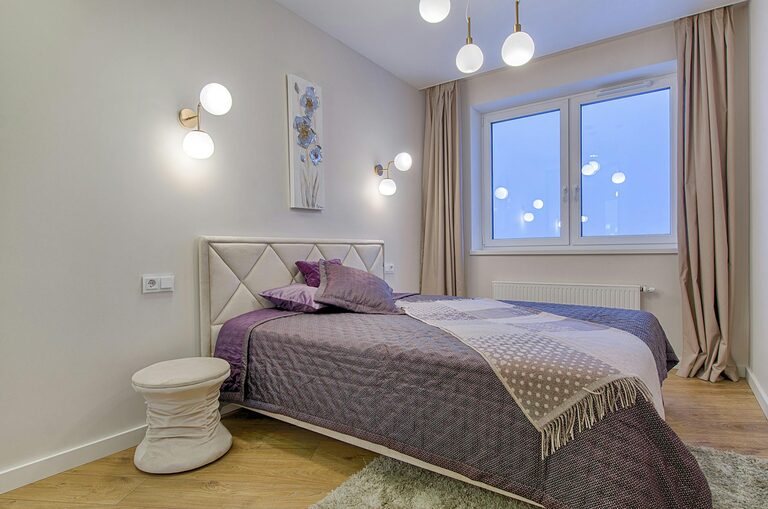Creating a comfortable and inviting atmosphere in your home starts with effective lighting. The right lighting not only enhances the appearance of your space but also affects your mood, productivity, and overall comfort. Whether you’re redesigning a whole home or just updating a single room, choosing the right lighting can seem overwhelming. This guide will help you understand the essentials of comfortable home lighting and provide tips to choose fixtures and bulbs that suit your lifestyle.
Why Comfortable Lighting Matters
Lighting influences how we perceive and interact with our home environment. Harsh or dim lighting can cause eye strain and fatigue, while well-chosen lighting can create warmth, highlight decor, and even improve your sense of wellbeing. Comfortable lighting strikes a balance between brightness and softness, ensuring visibility without glare or shadows.
Understand Different Types of Lighting
Before choosing your home lighting, it’s helpful to know the three main types of lighting and their roles:
1. Ambient Lighting
This is general lighting that provides overall illumination for a room. It typically comes from ceiling fixtures, recessed lights, or wall sconces. Ambient lighting should be soft but bright enough to light up the entire space comfortably.
2. Task Lighting
Task lighting focuses on specific areas where activities like reading, cooking, or working take place. Desk lamps, under-cabinet lights, and pendant lights over a kitchen island are good examples. Task lighting needs to be brighter and direct to reduce eye strain.
3. Accent Lighting
Used to highlight architectural features, artwork, or plants, accent lighting adds depth and interest. Think of spotlights, track lighting, or LED strip lights placed strategically to create focal points.
Tips for Choosing Comfortable Lighting
1. Select the Right Color Temperature
Light color is measured in Kelvin (K). Warm light (2700K-3000K) has a cozy, yellowish glow that’s perfect for living rooms and bedrooms. Cooler light (4000K-5000K) has a white or bluish tint suited for workspaces like home offices or kitchens. Aim for warmer tones in relaxation areas and cooler tones where clear visibility is important.
2. Choose Adjustable Lighting
Dimmers and adjustable fixtures give you control over brightness, making it easier to tailor lighting levels to different times of day and activities. Installing dimmer switches can transform a space from bright and energetic to soft and serene with a simple adjustment.
3. Consider the Size and Shape of the Room
Large rooms with high ceilings may require multiple light sources or brighter fixtures to ensure even illumination. Smaller rooms can benefit from fewer but well-placed lights to avoid harshness. Additionally, round or soft-edged lighting fixtures help distribute light evenly and reduce sharp shadows.
4. Opt for Quality LED Bulbs
LED bulbs are energy-efficient, long-lasting, and come in a variety of brightness levels and colors. Look for bulbs with a high Color Rendering Index (CRI) of 80 or above, which means colors appear more natural under their light. LEDs also generate less heat, contributing to comfort in warm seasons.
5. Layer Your Lighting
Layering light sources enhances versatility and comfort. Combine ambient, task, and accent lighting in each room to create depth and adapt the mood based on your needs. For example, a living room can have overhead lights for general use, table lamps for reading, and LED strips to highlight shelves or artworks.
6. Avoid Glare and Harsh Shadows
Position lights so they don’t shine directly into eyes or reflect off screens. Use frosted or shaded bulbs to soften light and prevent glare. Avoid single harsh light sources in sensitive areas like reading nooks or computer desks by balancing them with additional light layers.
7. Match Lighting Style to Your Decor
Choose fixtures that complement your interior design style. Whether modern, rustic, or traditional, cohesive lighting can improve the aesthetic comfort of a room. For example, warm-toned brass fixtures add coziness to classic rooms, while sleek metallic or black fixtures suit contemporary designs.
Room-by-Room Lighting Ideas for Comfort
Living Room
– Use dimmable ceiling lights paired with floor or table lamps.
– Incorporate warm LED bulbs for a cozy atmosphere.
– Add accent lighting to highlight artwork or bookshelves.
Kitchen
– Bright, cool white LED task lighting under cabinets.
– Pendant lights over the island or dining area for style and function.
– Ambient ceiling lights to provide overall brightness.
Bedroom
– Soft, warm ambient lighting—think ceiling fixtures or wall sconces.
– Bedside lamps with adjustable brightness for reading.
– Avoid overly bright or harsh lights to promote relaxation.
Bathroom
– Bright, cool task lighting near mirrors for grooming.
– Ambient lighting to softly illuminate the space.
– Waterproof fixtures for safety and durability.
Final Thoughts
Comfortable home lighting plays a vital role in creating a welcoming and functional living environment. By understanding different lighting types and making thoughtful choices about bulbs, fixtures, and placement, you can easily improve the ambiance and usability of your home. Remember to consider your lifestyle needs, the room’s purpose, and the mood you want to set when selecting lighting. With these tips, you can enjoy a beautifully lit home that feels just right at any time of day.
—
If you’re ready to update your home lighting, start by assessing your current setup and experimenting with different bulbs and placements. Small changes can make a big difference in comfort and style!

